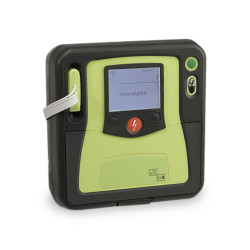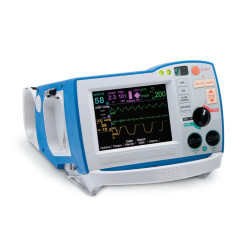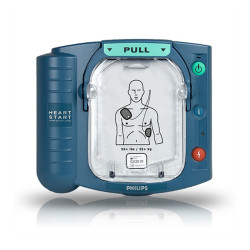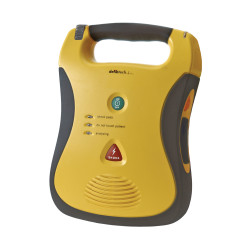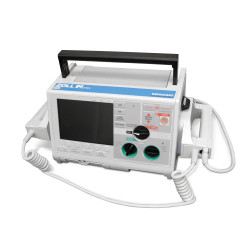Zoll AED Plus Defibrillator
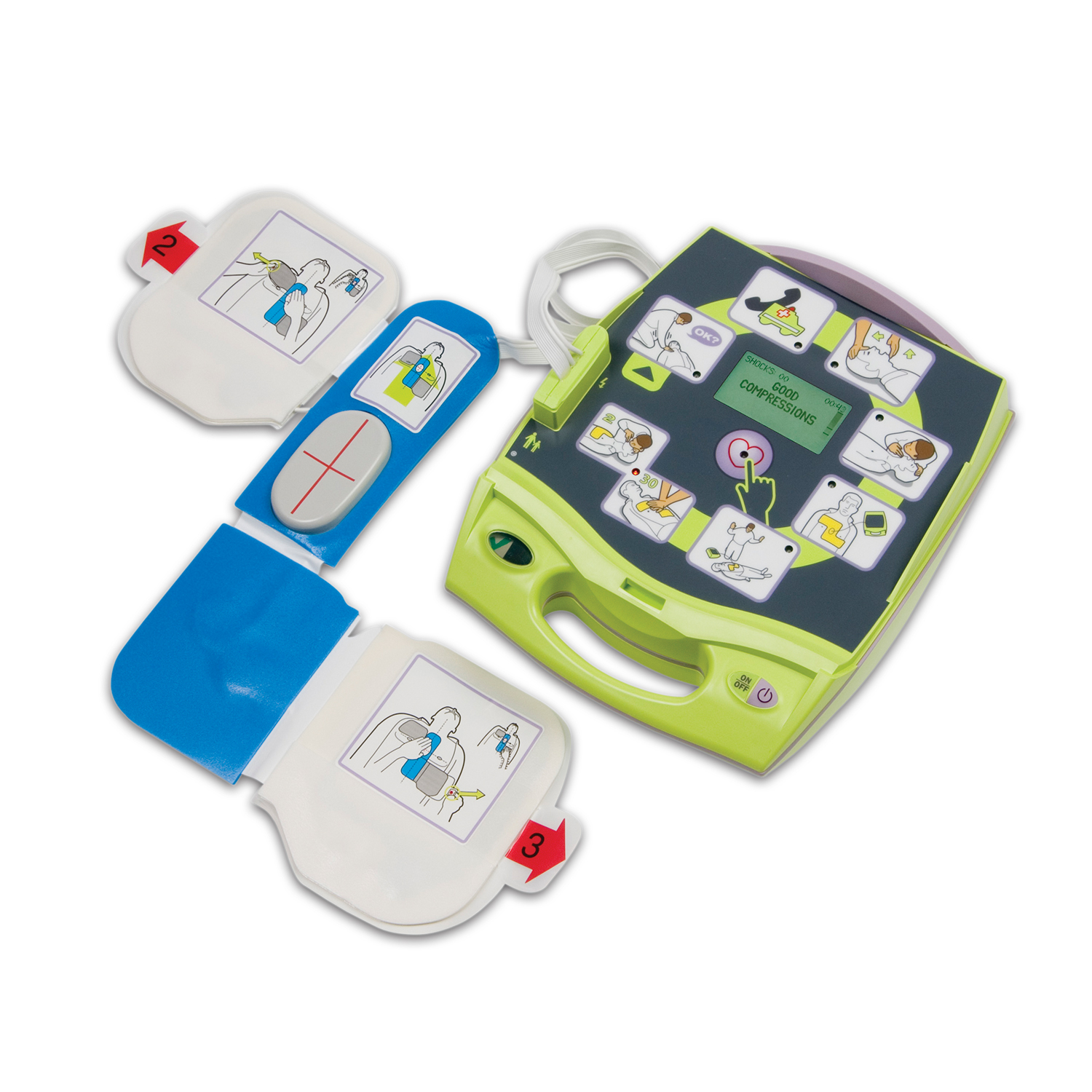

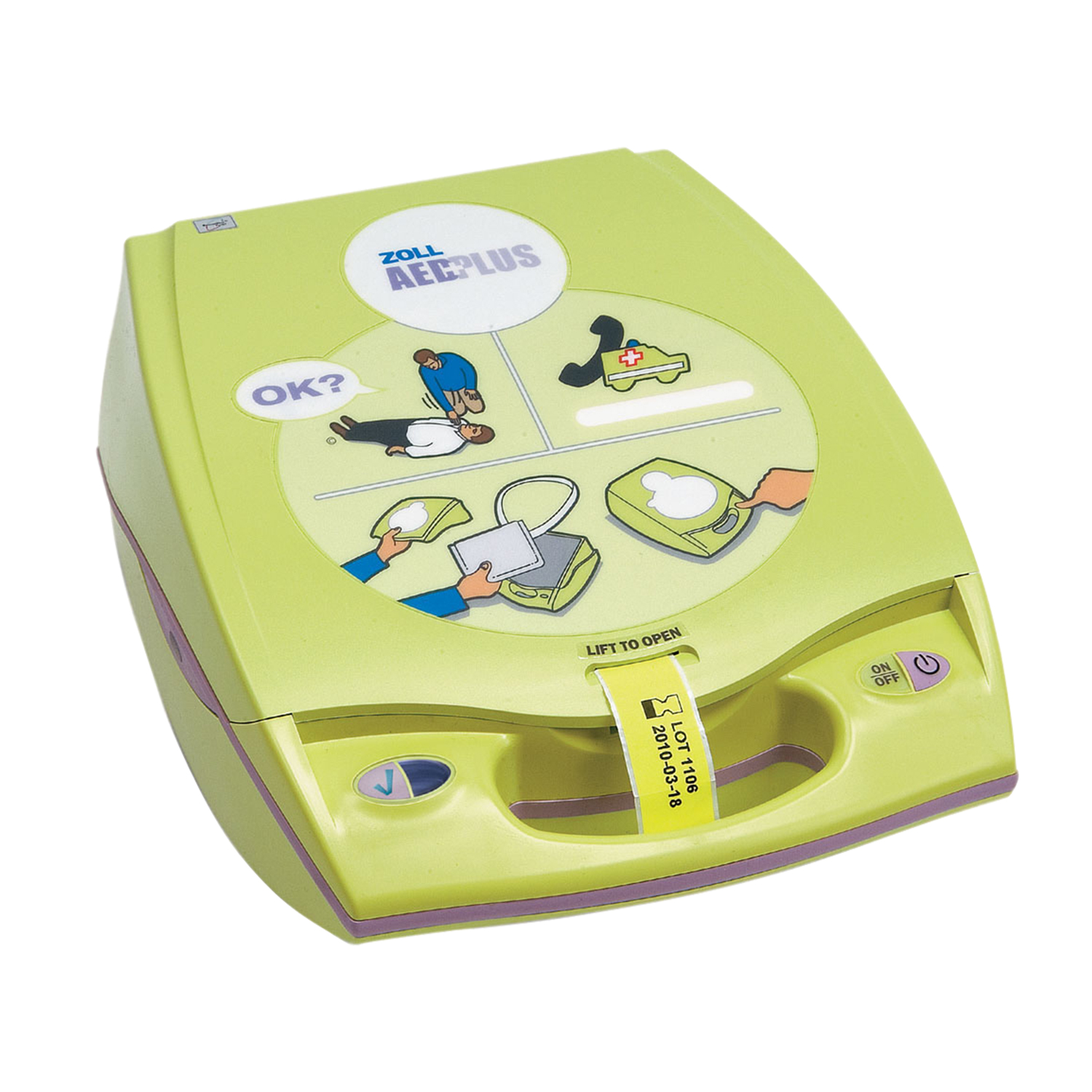
Zoll AED Plus Defibrillator
0 item is in your cart. View cart now
All product and company names are trademarks of their respective holders. Use of them does not imply any affiliation with or endorsement or sponsorship by them.
Details
Zoll Monitors provide the essential feedback needed for optimal AED use.
A Complete Road Map for Resuscitation
The Zoll AED Plus gives even infrequent rescuers the confidence they need to help save lives. A picture is worth a thousand words. The AED Plus' unique graphical interface—pictures combined with text displays and voice prompts—helps the rescuer every step of the way. Lights on the pictures draw the rescuer's attention to actions in the proper sequence. Text and voice prompts correspond to the pictures and help the rescuer perform every important life-saving action. These pictures and prompts assure that everything is done in order and that shocks, if required, are delivered rapidly.
Early defibrillation. Early advanced care.
Every step helps save lives. Any break in the chain compromises survival. Ordinary AED Monitors only defibrillate. Rapid defibrillation is a critical intervention to improve survival, but it is not enough. While roughly half of unresponsive, collapsed victims need defibrillation, every one of them needs cardiopulmonary resuscitation (CPR). Following the Chain of Survival requires more than just attaching electrodes and delivering a shock. From checking responsiveness, summoning help, and doing an "ABC" assessment (Airway, Breathing, Circulation) to CPR and defibrillation, the ZOLL® AED Plus™ with instantaneous CPR Feedback helps guide the rescuer through the entire effort to rescue SCA victims.
New technology in ZOLL's CPR-D padz includes a hand placement locator, an accelerometer, electronics, and a sophisticated processing algorithm. This system accurately measures CPR compression and converts the motion of the accelerometer over time into distance moved. The infrequent rescuer now has help providing CPR support for the victim.
One Electrode Size Fits All
A one-piece electrode design must account for anatomical variation in the patient population. The design of ZOLL's CPR-D-padz is based on extensive human anthropometric data and studies designed to accommodate the wide range of patient sizes and shapes and to ensure that a one-piece electrode meets the needs of emergency AED use. The design developed for the CPRD padz meets the anthropometric characteristics of 99% of human chest anatomy. A special feature lets the rescuer separate the apex electrode to cover the other 1% of the population and other anatomical variations that require special adaptation.
Specifications
Defibrillator
- Waveform: Rectilinear Biphasic
- Defibrillator Charge Hold Time: 30 seconds
- Energy Selection: Automatic preprogrammed selection (120J, 150J, 200J)
- Patient Safety: All patient connections are electrically isolated.
- Charge Time: Less than 10 seconds with new batteries.
- Electrodes: ZOLL CPR-D padz or stat padz II .
- Built in Defibrillator Self Test: Included
- CPR: Metronome Rate: Variable 60 to 100 CPM
- Depth: 1/2 to 3 inches (1.3 to 7.8 cm)
- Defibrillation Advisory: Evaluates electrode connection and patient ECG to determine if defibrillation is required.Shockable Rhythms: Ventricular fibrillation with average amplitude >100 microvolts and wide complex ventricular tachycardia with rates greater than 150 BPM. For ECG Analysis Algorithm Accuracy for sensitivity and specificity performance.
- Patient Impedance Measurement Range: 0 to 300 ohms
- Defibrillator: Protected ECG Circuitry
- Display Format: Optional LCD with Moving Bar
- Size: 2.6 × 1.3 inches (6.6 × 3.3 cm)
- Viewing Time: 2.6 seconds
- Display Sweep Speed: 25 mm/sec; 1 inch/sec
- Battery Capacity: Typical new (20°C) = 5 years (300 shocks) or 1.5 hours continuous Monitoring/Defibrillation End of life designated by Red X (typical remaining shocks = 100, 0.5 hours continuous Monitoring/Defibrillation).
- PC Minimum Requirements for configuration and patient data recovery: Windows® 98, Windows® 2000, Windows®NT, Windows® XP, IBM-compatible PII with 16550 UART (or higher) computer. 64MB RAM. VGA monitor or better. CD-ROM drive. IrDA port. 2MB disk space.
Device
- Size: 5.25 (H) × 9.50 (W) × 11.50 (D) inches (13.3 × 24.l × 29.2 cm)
- Weight: 6.7 lbs. (3.1 kg)
- Power: User Replaceable Batteries. 10 -Type 123A Photo Flash lithium manganese dioxide batteries.
- Device Classification: Class II and internally powered per EN60601-1
- Design Standards: Meets applicable requirements of UL 2601, AAMI DF-39, IEC 601-2-4, EN60601-1, IEC60601-1-2.
Environment
- Operating Temperature: PS Model: 32° to 122°F; 0. to 50°C; PA Model: 50° to 104°F; 10° to 40°C
- Storage Temperature: PS Model: -22° to 158°F; -30° to 70°C; PA Model: 32° to 122°F; 0° to 50°C
- Humidity: 10 to 95% relative humidity, non-condensing
- Vibration: MIL Std. 810F, Min. Helicopter Test
- Shock: PS Model: IEC 68-2-27; 100G; PA Model: IEC 68-2-27; 50G
- Altitude: PS Model: -300 to 15,000 ft.; -91m to 4573m; PA Model: -300 to 7,500 ft.; -91m to 2287m
- Particle and Water Ingres IP-55. CPR-D padz Shelf Life: 4 years
- Conductive Gel: Polymer Hydrogel
- Conductive Element: Tin
- Packaging: Multilayer foil laminate pouch
- Impedance Class: Low
- Cable Length: 36 in (91 cm)
- Sternum: Length: 6.1 in (15.5 cm); Width: 5.0 in (12.7 cm); Length, conductive gel: 3.5 in (8.9 cm); Width, conductive gel: 3.5 in (8.9 cm); Area, conductive gel: 12.3 sq in (79.0 sq cm)
- Apex: Length: 6.1 in (15.5 cm); Width: 5.6 in (14.1 cm); Length, conductive gel: 3.5 in (8.9 cm); Width, conductive gel: 3.5 in (8.9 cm); Area, conductive gel: 12.3 sq in (79.0 sq cm)
- Complete assembly: Folded Length: 7.6 in (19.4 cm); Folded width: 7.0 in (17.8 cm); Folded height: 1.5 in (3.8 cm)
- Design standards: Meets applicable requirements of ANSI/AAMI/ISO DF-39-1993.
